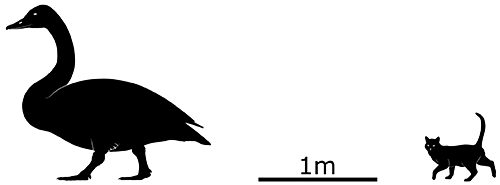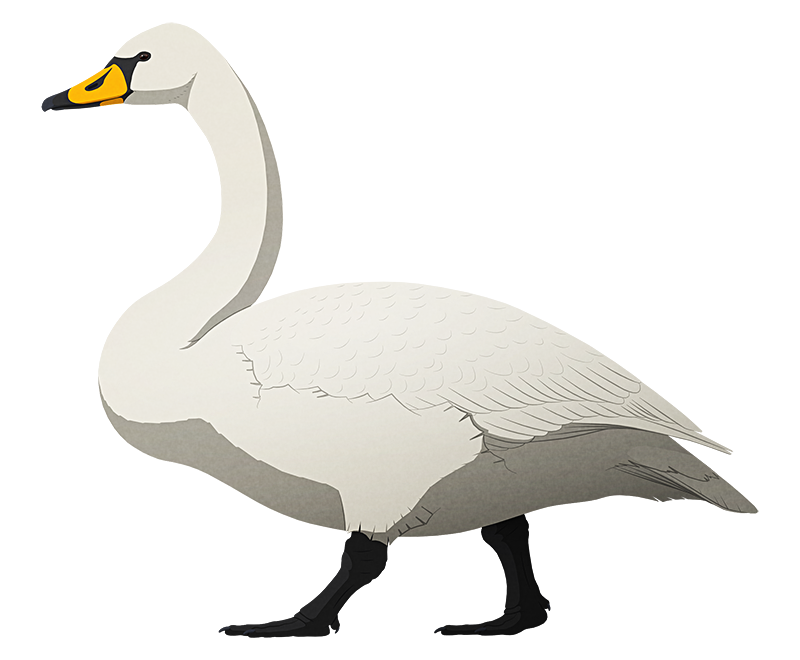The island of Sicily was isolated about 5.3 million years ago when the Mediterranean rapidly refilled. During the next few million years changes in sea level and tectonic uplift allowed repeated colonizations by mainlaind species via the sea strait separating Sicily from Italy, and opened up occasional connections with nearby Malta, resulting in a series of different ecosystems over time.
During the mid-Pleistocene, between about 900,000 and 500,000 years ago, a lack of large land predators on Sicily and Malta allowed a weird mix of endemic species to evolve. Most famous are the tiniest elephants (Palaeoloxodon falconeri), but there were also a couple of giant owls, a small long-legged owl, a giant crane, a big lizard, a giant tortoise, an otter, and giant dormice.
And then there were the swans.
Cygnus falconeri was enormous, at least a third larger than the biggest living swans, at least 1.5m tall (4’11”) — taller than the native elephants, although not nearly as heavy. Its wings were large, with a span of around 3m (9’10”), but at such a hefty size it would have been either a very poor and reluctant flier or functionally flightless.
Its legs were better adapted for walking around on land than for swimming, with shorter toes and possibly reduced webbing. It would have been one of the biggest terrestrial herbivores on Siculo-Malta, probably mainly a grazer but also capable of reaching much higher vegetation than the elephants or tortoises.
It lived alongside another unique swan species, the goose-like dwarf swan Cygnus equitum. Both the giant and dwarf swans probably evolved from the same whooper swan-like ancestor species, but each resulted from separate colonization events — otherwise interbreeding would have probably prevented them from developing such a huge difference in size.

Or an alternative scale comparison to highlight the utter ridiculousness of this island:

Between 500,000 and 200,000 years ago multiple sea level fluctuations allowed new species to colonize Siculo-Malta from the mainland, including various large mammalian herbivores and carnivores. With new competition and predators, Cygnus falconeri probably disappeared around the same time as the tiny elephants and most of the other mid-Pleistocene endemic animals.
The dwarf swan, smaller and still a strong flier, may have survived the altered ecosystem for a bit longer, but would have gone extinct during the rapid climate changes at the start of the last glacial period 115,000 years ago.

